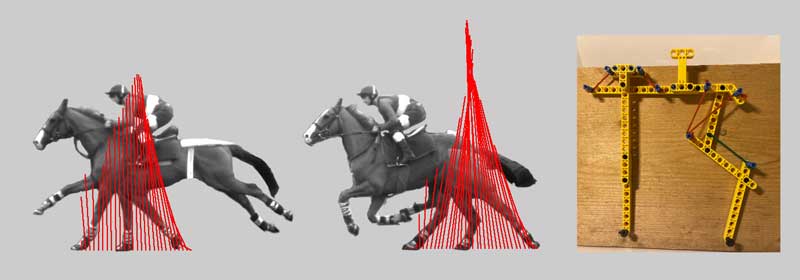9 Mar 2022
Study by RVC professor uncovers how muscles and tendons work together to transfer weight without exerting unnecessary energy.

Fast animals produce nearly vertical forces, with their feet “sliding” under their hips and shoulders. Like wheels or a skate, this is an economical way of moving while supporting bodyweight.
An RVC professor hopes he has taken a big step in improving understanding of the role of animal muscles and tendons.
A study has uncovered how muscles and tendons work together to transfer weight without exerting unnecessary energy.
It is hoped the findings will allow different approaches to be considered for future surgery, rehabilitation and prosthetics.


The study focused on highlighting some of the tricks by which muscles and tendons allow bodyweight to be supported during horizontal motion while avoiding mechanical work – effectively acting like a wheel and bicycle spokes.
Jim Usherwood, Wellcome Trust senior research fellow at the RVC, led the study. He worked with lollipop sticks and Lego to build models to reveal the four-bar and six-bar linkages, or pin joints, involved in different muscles.
Using these techniques, he found animals avoided unnecessary work by sliding their hips and shoulders over their feet when running.
Focus has previously been put on the importance of elastic recoil in tendons, but learning more about the linkages potentially allows better choices on surgical approaches, rehabilitation programmes and prosthetic diseases.
Prof Usherwood said: “It has been known for 40 years that running animals manage to ‘slide’ their bodies over their feet, and that this could be an economy trick, just like a wheel or skate allows weight forces to be carried during horizontal motion.
“What has been missing is how the muscles manage to achieve this without wasting a huge amount of energy pulling against each other. By spending plenty of time with a puppy, lots of Lego and a computer, I was able to identify some of the linkages involved – and these linkages have been known about since the Industrial Revolution.”
Prof Usherwood’s full paper, “Legs as linkages: an alternative paradigm for the role of tendons and isometric muscles in facilitating economical gait”, is published in the Journal of Experimental Biology.